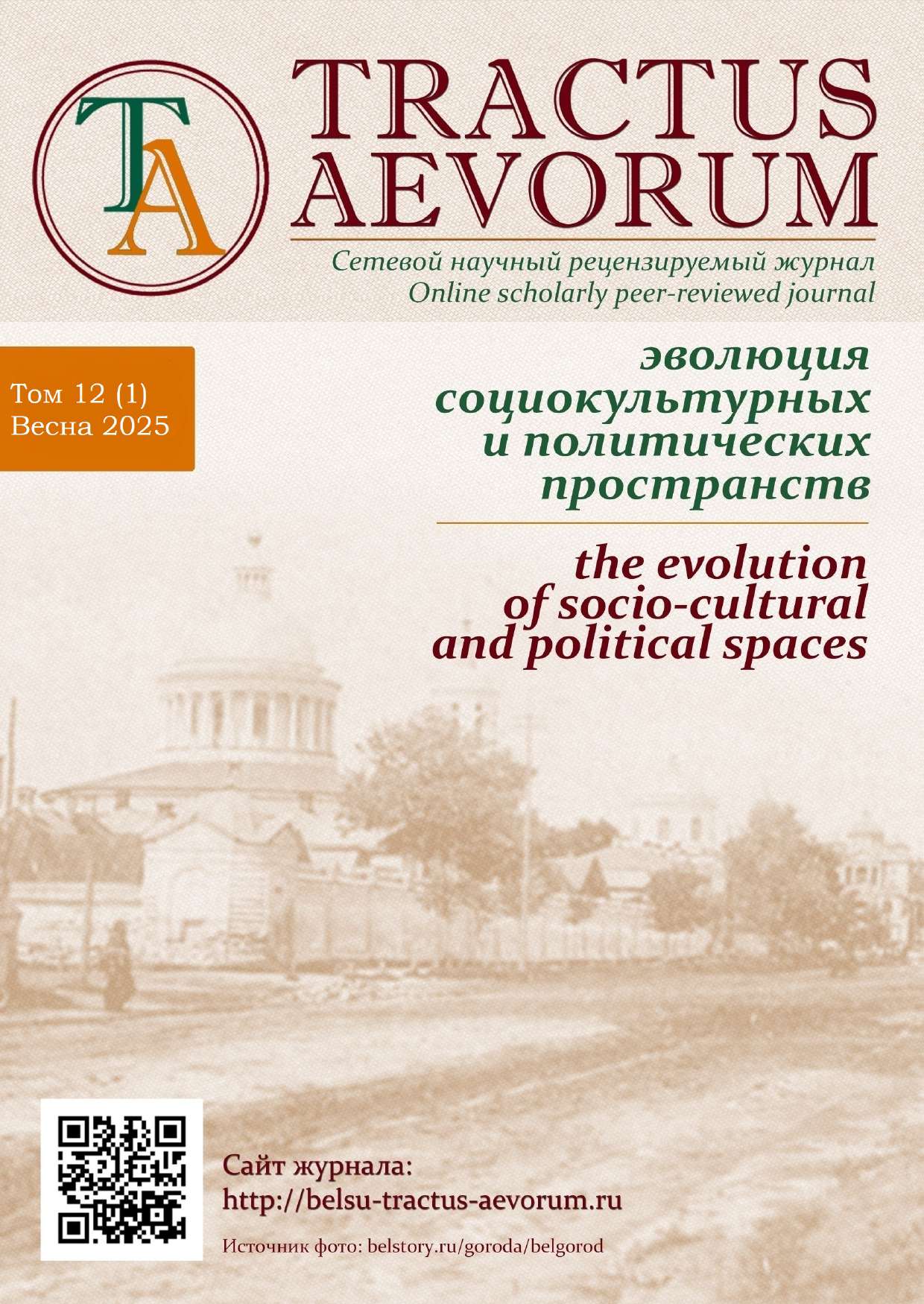|
DEFENDERS OF THE FATHERLAND
|
“In the shadow of the marshal of Victory”: biographies of the chief of staff of the Central Front, the chief of the operations department and his deputy in preparing and conducting the Battle of Kursk
|
  |
Original article
Dmitry V. Naumov
Independent researcher
1 Vokzalnaya st., Belgorod, 308500, Russia
E-mail:
This e-mail address is being protected from spambots. You need JavaScript enabled to view it
Denis O. Timiryaev
National Research University Higher School of Economics
21/4, building 3 Staraya Basmannaya st., Moscow, 105066, Russia
E-mail:
This e-mail address is being protected from spambots. You need JavaScript enabled to view it
Abstract. The study of the life path and activities of participants in the Great Patriotic War remains an extremely important area of research. Unfortunately, the names of the staff officers who participated in the development of the most important operations are known to a narrow circle of specialists, while the general public is mostly unaware of their merits. The article contains biographical information about the officers of the Central Front headquarters Mikhail Sergeyevich Malinin, Ivan Ivanovich Boykov, and Vladimir Mikhailovich Kramar. Mikhail Sergeyevich Malinin held the position of chief of staff of the front, Ivan Ivanovich Boykov was chief of the operations department of the headquarters, and Vladimir Mikhailovich Kramar was deputy chief of the operations department. The study of archival materials allowed the authors to establish new biographical information. According to historical records, the officers showed themselves excellently in staff work. Due to their skillful actions, the troops of the Central Front were able to make a significant contribution to the collapse of Operation Citadel. The high level of work of M.S. Malinin and I.I. Boykov was also noted by the Marshals of Victory – K.K. Rokossovsky and G.K. Zhukov.
Keywords: The Great Patriotic War, Battle of Kursk, Central Front, M.S. Malinin, I.I. Boykov, V.M. Kramar, front chiefs of staff, operations department, biographies.
DOI: 10.18413/2312-3044-2025-12-1-3-18
EMPIRE AND PERIPHERY
|
Soil and climatic conditions of economic development of the Upper Don Region in the 17th - first quarter of the 18th Century
|
  |
Original article
Denis A. Lyapin
Bunin Yelets State University
28 Kommunarov st., 28, Yelets, 399780, Russia
E-mail:
This e-mail address is being protected from spambots. You need JavaScript enabled to view it
Ekaterina V. Proshunina
Bunin Yelets State University
28 Kommunarov st., 28, Yelets, 399780, Russia
E-mail:
This e-mail address is being protected from spambots. You need JavaScript enabled to view it
Abstract. The article is devoted to the study of soil and climatic conditions of economic development of the Upper Don region from the 17th century to the first quarter of the 18th century. The authors are the first to attempt to study specific natural factors and their impact on the region’s development. The number of rural settlements is taken as the main indicator of the dynamics of economic development of the Upper Don region. In this regard, the authors highlight the first stage of colonization (before the 1660s), associated with a stable growth of rural settlements. At the second stage, the number of settlements did not increase, and the population number fell. Using the data obtained during soil studies and cartographic materials, the authors have established that initially the climatic conditions for the economic development of the Don region were very favorable. People preferred to settle in low floodplain terraces and cultivate land on hills. Then the temperature began to decrease, and humidity increased, which led to large river floods. These changes contributed to the demographic crisis of the early 18th century, but over time, the soil factor played a favorable role, and the crisis was completely overcome.
Keywords: soil, chernozem, colonization, economic development, Upper Don region, climatic conditions.
Acknowledgments: The study was supported by a grant from the Russian Science Foundation (project No. 24-68-00011, https://rscf.ru/project/24-68-00011/) at the Bunin Yelets State University.
DOI: 10.18413/2312-3044-2025-12-1-19-34
MEDIA DISCOURSE
|
Analysis of political discourse on the Mau Mau movement in global media
|
  |
Original article
Elena A. Gamora
Belgorod State National Research University
85 Pobedy st., Belgorod 308015, Russia
E-mail:
This e-mail address is being protected from spambots. You need JavaScript enabled to view it
Abstract. This article examines the political discourse on the Mau Mau movement in global print and broadcast media, focusing on propaganda strategies employed by the Western press. British and American publications portrayed the uprising as a threat to stability, demonizing the rebels while ignoring their political demands. Propaganda relied on sensational headlines, visual imagery, and emotionally charged reports to construct a narrative that justified colonial policies. Amid the Cold War, media coverage of the conflict also served as a tool in the geopolitical struggle between the West and the USSR. The article highlights how British and American media strategies reinforced their global positions, shaping public opinion and legitimizing repressive measures against African liberation movements.
Keywords: Mau Mau, political discourse, media, propaganda, colonialism, Cold War, Britain, USA, Soviet Union, decolonization.
DOI: 10.18413/2312-3044-2025-12-1-35-50
|
Coverage of the Chernobyl catastrophe in the mass media in 1986
|
  |
Original article
Alexandr A. Kudinov
Samara Campus of Moscow city university
76, Stara Zagora st., Samara, 443081, Russia
E-mail:
This e-mail address is being protected from spambots. You need JavaScript enabled to view it
Abstract. The article analyses the reaction of mass media to the Chernobyl disaster. The author provides examples of messages from both the Soviet press and the Western European and American press. Television reports on Chernobyl accident are analysed. The study reveals the main tendencies of the published messages and shows the chronology of the published material. The main reasons for concealment of information by the Soviet media and its exaggeration by Western journalists are examined. The article proves that these factors had a determining influence on the formation of public opinion about the Chernobyl catastrophe and largely contributed to its mythologisation.
Keywords: Chernobyl, Chernobyl catastrophe, periodicals, public opinion formation.
DOI: 10.18413/2312-3044-2025-12-1-51-63
INTELLECTUAL HISTORY
|
The populist “Going to the People” of 1874 and the children’s crusade of 1212: common elements of eschatological mythmaking: introduction to a series of articles
|
  |
Original article
Tony Rocchi
Independent researcher
Toronto, Canada
E-mail:
This e-mail address is being protected from spambots. You need JavaScript enabled to view it
Abstract. This paper is the first in a proposed series of articles about common elements of eschatological mythmaking in the populist “Going to the People” in 1874 and the Children’s Crusade of 1212. The article examines the main challenges in determining common elements in these two movements. Eschatology is a religious teaching about the coming end of the world and the arrival of a new age. Beginning with the French Revolution, eschatology acquired a political content. The child crusaders and the young populists wanted to speed up the end of the present world and the coming of a new age. The “Going to the People” and the Children’s Crusade had many elements of similarity in their historical narratives. The main components of these narratives included an emphasis upon lofty idealism, moral purity of the participants, and devotion to a cause. Both movements suffered defeat. The narratives usually end with the sufferings, martyrdom, and disillusionment of the participants in their ideals. In contrast to the children crusaders, the participants in the “Going to the People” took up other means to attain their revolutionary goals, and many former “peaceful” propagandists became terrorists and members of the People’s Will organization in the latter part of the 1870s. The government repressions against the propagandists became the foundational myth of the People’s Will. The article’s theme is relevant for scholarly investigation of similar mass religious and political eschatological movements, for example, the massive outbreak of youth rebelliousness in 1968.
Keywords: eschatological movements; youth movements; Children’s Crusade of 1212; Populist “Going to the People” of 1874; revolutionary populism; “People’s Will”, 1968.
DOI: 10.18413/2312-3044-2024-12-1-64-89
TRANSITIONAL EPOCHS
|
Evolution of the attitude of state authorities towards the Russian Orthodox Church in the first quarter of the 20th Century
|
  |
Original article
Ivan. Y. Cherenkov
Voronezh State Pedagogical University
86 Lenin St., Voronezh, 394043, Russia
E-mail:
This e-mail address is being protected from spambots. You need JavaScript enabled to view it
Abstract. The article examines the evolution of the attitude of state power towards the Russian Orthodox Church in the first quarter of the 20th century, when the imperial government was replaced by the provisional government, and then the Soviet state. The main focus of the comparative analysis is on the changing position of the Church in the state and society in the last years of the reign of Nicholas II and in the early years of Soviet power. The normative documents and program speeches of the Bolshevik leaders on church issues became the source base for comparative analysis.
Keywords: Russian Orthodox Church; Russian Empire; RSFSR; religion.
DOI: 10.18413/2312-3044-2025-12-1-90-98
|



